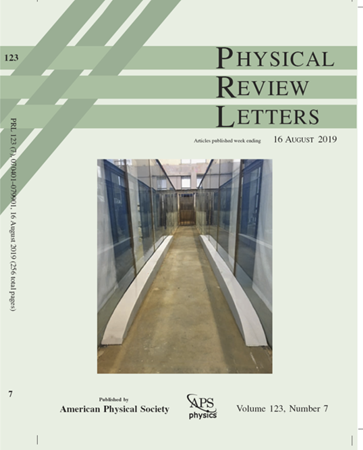Constraints on Axion Mediated Dipole-Dipole Interactions
IF 8.1
1区 物理与天体物理
Q1 PHYSICS, MULTIDISCIPLINARY
引用次数: 0
Abstract
The search for axions sits at the intersection of solving critical problems in fundamental physics, including the strong CP problem in QCD, uncovering the nature of dark matter, and understanding the origin of the Universe’s matter-antimatter asymmetry. The measurement of axion mediated spin-dependent interactions offers a powerful approach for axion detection. However, it has long been restricted to regions outside the “axion window” due to a significant trade-off: the need to effectively suppress the magnetic leakage from highly polarized spin sources while simultaneously detecting subfemtotesla level exotic physics signals at sub-decimeter-scale distances. In this work, we report new experimental results on axion mediated exotic spin-spin interactions using an iron-shielded轴子介导的偶极-偶极相互作用的约束
对轴子的探索是解决基础物理学中关键问题的交叉点,包括QCD中的强CP问题,揭示暗物质的本质,以及理解宇宙物质-反物质不对称的起源。测量轴子介导的自旋依赖相互作用为轴子检测提供了一种强有力的方法。然而,长期以来,由于一个重要的权衡,它一直被限制在“轴子窗口”以外的区域:需要有效地抑制高极化自旋源的漏磁,同时在亚分米尺度距离上检测亚飞特斯拉级的奇异物理信号。在这项工作中,我们报告了使用铁屏蔽SmCo5自旋源与专门设计的自补偿磁强计相结合的轴子介导的奇异自旋-自旋相互作用的新实验结果。采用复合屏蔽结构,我们实现了高达1011的磁场抑制。这使我们能够建立电子和中子之间耦合的新约束,在轴子窗口内将先前的实验限制提高了10,000倍。此外,我们还对电子和质子之间的耦合设置了最强的约束。所提出的方法具有巨大的潜力,不仅可以推进对超越标准模型的新物理学的探索,而且可以在生物和化学研究中实现变革性应用。2025年由美国物理学会出版
本文章由计算机程序翻译,如有差异,请以英文原文为准。
求助全文
约1分钟内获得全文
求助全文
来源期刊

Physical review letters
物理-物理:综合
CiteScore
16.50
自引率
7.00%
发文量
2673
审稿时长
2.2 months
期刊介绍:
Physical review letters(PRL)covers the full range of applied, fundamental, and interdisciplinary physics research topics:
General physics, including statistical and quantum mechanics and quantum information
Gravitation, astrophysics, and cosmology
Elementary particles and fields
Nuclear physics
Atomic, molecular, and optical physics
Nonlinear dynamics, fluid dynamics, and classical optics
Plasma and beam physics
Condensed matter and materials physics
Polymers, soft matter, biological, climate and interdisciplinary physics, including networks
 求助内容:
求助内容: 应助结果提醒方式:
应助结果提醒方式:


